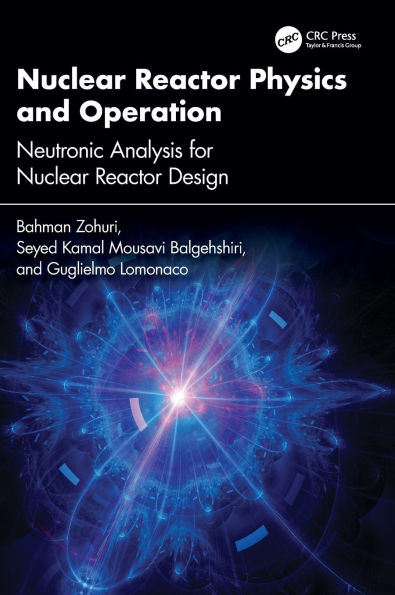This book serves as a thorough reference for students, researchers, and professionals in nuclear engineering and reactor physics, offering a detailed exploration of the core principles behind nuclear reactor theory, neutron transport, neutronic analysis, and reactor core design and calculations. Each chapter includes at least one example to illustrate the topics covered, and the latter half focuses on key areas relevant to operating reactors – reactor kinetics/dynamics and in-core fuel management. Building on the foundational physics presented in the first half, it develops reactivity models using realistic reactor cross-section data and advanced analytic tools. This book is a valuable resource for engineers and scientists in the nuclear industry, as well as senior and graduate students in Nuclear Engineering, Mechanical Engineering, and Physics.
Key Features
- Offers an in-depth examination of reactor physics, encompassing neutron interactions, reactor kinetics, reactor dynamics, fuel cycles, and safety factors, to provide a comprehensive understanding of nuclear reactor operation and design
- Contains clear explanations of complex theories and mathematical formulations, accompanied by illustrative diagrams, figures, and examples to facilitate comprehension
- Features structured chapters with learning objectives, summaries, review questions, and problem sets at varying levels of difficulty to reinforce understanding and encourage active engagement with the material
This book serves as a thorough reference for students, researchers, and professionals in nuclear engineering and reactor physics, offering a detailed exploration of the core principles behind nuclear reactor theory, neutron transport, neutronic analysis, and reactor core design and calculations. Each chapter includes at least one example to illustrate the topics covered, and the latter half focuses on key areas relevant to operating reactors – reactor kinetics/dynamics and in-core fuel management. Building on the foundational physics presented in the first half, it develops reactivity models using realistic reactor cross-section data and advanced analytic tools. This book is a valuable resource for engineers and scientists in the nuclear industry, as well as senior and graduate students in Nuclear Engineering, Mechanical Engineering, and Physics.
Key Features
- Offers an in-depth examination of reactor physics, encompassing neutron interactions, reactor kinetics, reactor dynamics, fuel cycles, and safety factors, to provide a comprehensive understanding of nuclear reactor operation and design
- Contains clear explanations of complex theories and mathematical formulations, accompanied by illustrative diagrams, figures, and examples to facilitate comprehension
- Features structured chapters with learning objectives, summaries, review questions, and problem sets at varying levels of difficulty to reinforce understanding and encourage active engagement with the material

Nuclear Reactor Physics and Operation: Neutronic Analysis for Nuclear Reactor Design
342
Nuclear Reactor Physics and Operation: Neutronic Analysis for Nuclear Reactor Design
342
Product Details
| ISBN-13: | 9781032966229 |
|---|---|
| Publisher: | CRC Press |
| Publication date: | 08/29/2025 |
| Pages: | 342 |
| Product dimensions: | 7.00(w) x 10.00(h) x (d) |
